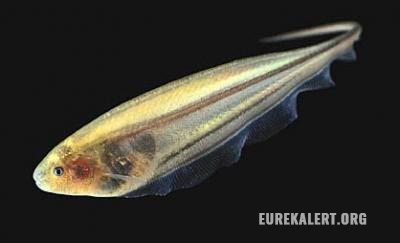
These findings led researchers at New Jersey Institute of Technology (NJIT) and the John Hopkins University (JHU) to surmise that knifefish interpret the data from their active senses through a dual-control system. They also believe that this characteristic is naturally, and only, found in animals.
Active sensing collects sensory feedback on the surroundings by issuing signals like movement or sounds – for example, echolocation. But it is difficult to distinguish between the active sensing behavior and the sensory feedback produced by that activity.
The researchers made these discoveries by subjecting glass knifefish specimens to augmented reality. The technique allowed them to uncover the details behind the process of motion-derived active sensing and feedback controls. (Related: Deepwater Horizon oil spill’s effects are still being seen: Atlantic stingrays found to have significantly impaired olfactory functions.)
The tiny movements made by glass knifefish led to a big discovery in active sensing
The glass knifefish is a species of electric fish that lives in the shallow waters of the Amazon. When it senses a predator, the fish would hide within its refuge until the threat has departed the area.
All knifefish species demonstrate an active sensing behavior called "station-keeping." They could keep track of the position of their chosen refuge by generating small amounts of electricity. During this seeming lack of activity, the fish makes minute movements similar to those in human eyes.
The NJIT-JHU team decided to disturb the way the knifefish perceives its motion relative to its refuge. They placed the weakly-electric fish inside an aquarium tank with an artificial refuge and video cameras that can follow the fish in real time.
Based on the swimming motions of the knifefish, the enclosure could move back and forth. This allowed the researchers to conduct different categories of experiments on the behavior and movement of the fish within the refuge.
In closed loop experiments, the refuge will move in accordance to the movement of the fish. During open loop testing, the enclosure did not actually move. Instead, augmented reality simulated the movement to try and trick the fish.
Knifefish can sense the difference between augmented reality and real activity
In their published paper, the joint research team found that the closed loop experiments forced the knifefish to cover the biggest ground so that it could gather sufficient sensory data on its refuge. These tests were the ones where the refuge matched the movement of the fish.
"It is similar to the way visual information of a room might change as a person is walking through it, as opposed to the person watching a video of walking through a room," explained JHU researcher Noah Cowan.
Cowan and his colleagues reported that the behavior of the animals changed based on the source of the stimulus. In the closed loop experiments, the fish was in control of its movement. But in the open loop tests, the movement was performed by the human researchers.
The NJIT-JHU team came to the conclusion that the fish relied on separate control loops. The first control regulated the data sent by active sensing motions. The second one made use of the gathered sensory information by activating the appropriate motor function.
"We think that engineers could take the data we've published and translate that into more powerful feedback control systems," the researchers reported.
Sources include:
Please contact us for more information.























